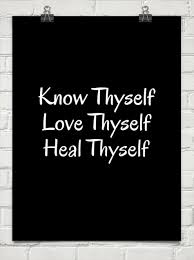It was 2 am in the bedroom of my aunt’s cabin a few hours north of the city where I grew up. With my heart pounding and my hands shaking, I turned to my mother and said, “I think I need to see a therapist, I cannot keep living like this.” I was 12 years old at the time. This realization came to me while in the midst of another frightening panic attack. At the time I did not know what it was, only that it was incredibly scary. I had been experiencing them frequently, and this one was even worse due to my being in an unfamiliar place. The nighttime had proven to be an especially challenging time for my newfound panic and anxiety, and I did not know how many more sleepless nights I could handle.
 My family returned home, and my parents scheduled an appointment for me to see a psychologist. It was there that I first learned what a panic attack was, and how I could learn to cope with them. My therapist helped me create a healing plan, and each week we worked on different coping mechanisms. I learned tools to regulate my breathing as well as relaxation exercises to do before going to bed. It was a challenging time because I had to address many of the fears, phobias, and sensations that I often avoided. However, it was the best decision I could have made, and I am grateful for parents who helped me receive the support I needed. Within 12 to 15 weeks of therapy I began to feel a lot less anxious, and my nighttime panic attacks were nearly gone.
My family returned home, and my parents scheduled an appointment for me to see a psychologist. It was there that I first learned what a panic attack was, and how I could learn to cope with them. My therapist helped me create a healing plan, and each week we worked on different coping mechanisms. I learned tools to regulate my breathing as well as relaxation exercises to do before going to bed. It was a challenging time because I had to address many of the fears, phobias, and sensations that I often avoided. However, it was the best decision I could have made, and I am grateful for parents who helped me receive the support I needed. Within 12 to 15 weeks of therapy I began to feel a lot less anxious, and my nighttime panic attacks were nearly gone.
My first experience going to therapy and addressing my anxiety head-on was a positive experience that left me feeling more prepared to deal with anxiety. However, as time went on after I left therapy, the panic attacks and anxiety began to come back- this time stronger. New phobias started to emerge, and I found myself choosing to avoid any situations that would cause me to experience panic. It was an incredibly isolating experience that I’m sure many people struggling with anxiety can understand. No matter how much I tried to use the tools and coping mechanisms I learned in therapy, overcoming the panic attacks seemed nearly impossible. One of the most difficult parts of dealing with the intense anxiety and panic attacks was not understanding what was going on in my body. I knew I was safe and there were no immediate threats around me, but why was my body freaking out? I felt ashamed and out of control. It was then that I knew I not only needed to practice my coping tools, but also learn about the science behind anxiety and panic.
I sought out information online and listened to talks by professionals who specialized in anxiety and panic. I was surprised how common and “human” experiencing anxiety was. Hearing other people’s anxiety stories helped ease the shame and embarrassment I was feeling about mine. Some of the most important tools I have learned to help my anxiety and panic attacks are to focus on breath, my thoughts, and the cognitive impairments that anxiety can cause. I now know that taking long deep breathes can considerably decrease the intensity of “scary” panic sensations.
Another tool that has helped me cope as an “anxiety warrior” is understanding my thoughts and the cognitive impairments that can sometimes tag along with anxiety and panic. While experiencing a panic attack, I remind myself that my thoughts are not always true, and the perceived “risk” is not always as high as it may seem. I know now that during a panic attack, my brain is at a heightened state, and everything will seem a lot more frightening. Repeating to myself, “I am safe, I am calm, this is just a panic attack” has helped me shift my thoughts during the worst part of my panic.
I’ve learned that the anxiety begins to decrease when I accept that it is OKAY to have it.
When I recognize that anxiety is simply another emotion, one that will come and eventually go, I stop fearing it so greatly. When I take panic off its pedestal of being “the one thing I simply cannot handle,” I open myself up to the opportunity of overcoming fears and seeing my own strength. I still have ways to go in my recovery, but I know that it is achievable.
By: Grace W, AiT Contributor